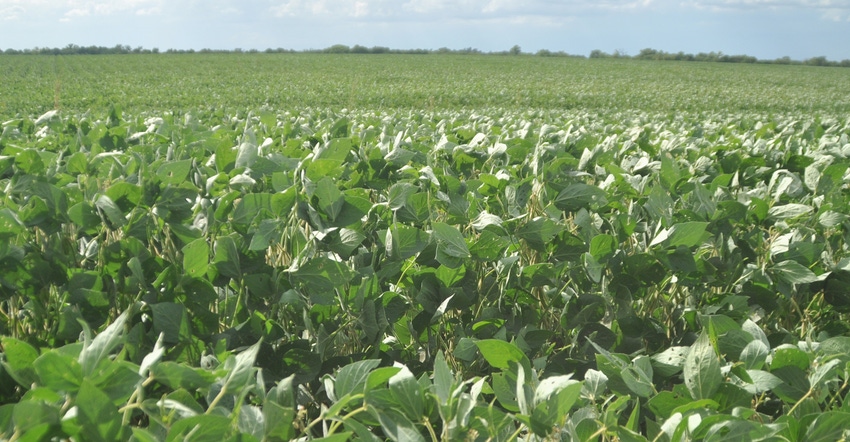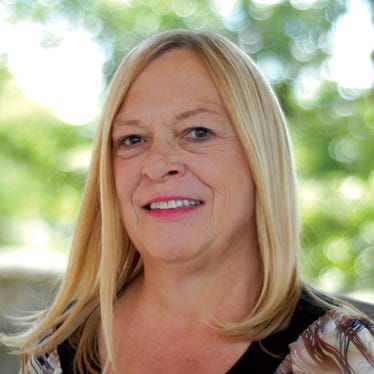
Automatic systems in most farm machinery these days collect a wealth of data with every pass of the planter, the sprayer or the combine. Satellites overhead take pictures throughout the growing season, and drones are available to crisscross fields, photographing and recording all they see.
By the end of harvest, there’s a vast amount of data available to the producer. The real question then becomes: What does it all mean and how can it help with decision-making to achieve a better bottom line by the end of the 2021 growing season?
That’s where advisers such as Asgrow Dekalb technical agronomist Jeff Schaef come in. Schaef lives in Wichita, Kan., and works primarily with producers in central Kansas.
Narrowing in on problems
“We have a product called the digital Climate Field View Plus,” Schaef says. “It collects all that data from all sources and allows a producer to look at it field by field or through a whole field region. It can be combined with satellite imagery from different times in the growing season and provides a clear picture of how a field performed — where yields were best and where they were worst, where there may have been insect or weed or disease pressure. We can then work with producers to find out why any problems happened.”
In an area where the data shows a problem, producers can make a physical evaluation. That may entail pulling soil samples, checking for issues such as poor drainage, or even pulling up plants to look for signs of root issues.
Climate FieldView also allows customers to compare their field performance with demonstration plots planted by Asgrow Dekalb in the same region.
“It basically allows a customer to make his whole field a test plot,” Schaef said. “We can collect the data from test plots and analyze the performance of different hybrids and different crop protection products so we can see which products work best in their field conditions.”
Analyzing what your data is telling you is easiest when you have a trusted adviser, dealer or agronomy support person to help you make sure it has all been collected in a way that makes the analysis the best it can be, he says.
Find best ROI
The final analysis data allows a farmer to develop a planting script for the following year to ensure that he is getting the best return on investment in every part of the field.
“In some cases, it may be advisable to reduce plant population on those areas of the field that show problems with soil quality or fertility,” Schaef said. “Or you may want to spend your fertilizer dollars on the best parts of the field, where the return will be the best. The idea is to try to be as efficient as possible, especially when dealing with the low margins we have right now.”
If there are problems in a given field, such as corn rootworm or earworm, resistant weed problems or fertility problems, “it’s a process that gets you to the right hybrids for each field on the farm and use the right protection products to maximize your return,” Schaef says.
The broad portfolio of products that came with the merger that created Asgrow Dekalb means there’s probably a recommended product for almost any scenario.
“We’re trying to get to a system where the seed, chemistry, fertility products and protection products are all meant to work together — that whole-farm solution that we have been trying to get to for a number of years,” he says.
A lot of work has recently gone into products to protect against soybean cyst nematode and the infection that causes sudden death syndrome, he says. “We do believe they do play hand in hand, and we do a lot of work trying to protect our soybeans from SCN with good management and with seed treatment products such as Ilevo.”
SDS is a bigger problem in irrigated fields and in years when cool, wet weather stretches into the growing season. “If you have a forecast for a stretch of cold and wet weather coming up, it’s better to hold off on planting,” he says. “You can plant into June and still have time for a full-season harvest. Maturity is based on day length, not just number of days, so you get a faster maturity when the days are longer.”
Pulling together weather data and statistics from the previous season, and analyzing it to develop a plan for the coming year is something that many younger producers enjoy, Schaef says.
“I’ve heard from younger farmers that is pretty cool to take virtual data and play around with it to create a plan,” he says. “They say the technology has made farming fun again.”
About the Author(s)
You May Also Like






